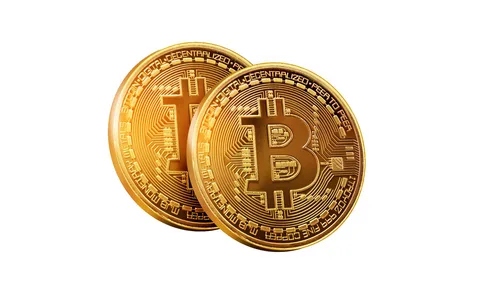Confused by the buzz about Bitcoin price? It’s a digital currency that’s shaking up the financial world. Our blog breaks down Bitcoin basics, from understanding how it works to finding out if it’s right for you.
Let’s dive in and unravel the mystery!
- Key Takeaways
- Understanding Bitcoin
- What is Bitcoin?
- How does it work?
- Who created it?
- History and growth
- Design and technology
- Economics and usage
- Legal status
- Bitcoin Mining
- What is mining?
- How to get started
- Required equipment
- Mining pools
- Energy consumption
- Scalability and decentralization challenges
- Investing in Bitcoin
- How to buy Bitcoin
- Market trends
- Potential for investment
- Managing and storing Bitcoin
- Conclusion
Key Takeaways
- Bitcoin is a digital currency that operates on a blockchain, a public ledger recording all transactions across computers worldwide. It’s decentralized, meaning no banks or governments control it.
- Miners validate transactions and secure the network by solving cryptographic puzzles, earning bitcoins as rewards for their efforts. This process also helps prevent double spending.
- The legal status of Bitcoin varies around the world; while some countries accept it as payment, others have outright bans or strict regulations impacting its use and trading.
- Investing in Bitcoin involves buying through exchanges, keeping an eye on market trends, and securely managing your digital wallet to protect your assets.
- The potential for investment in Bitcoin exists due to its limited supply and growing mainstream acceptance but comes with risks associated with market volatility.
Understanding Bitcoin
Bitcoin is a digital currency that operates on a decentralized network, making it immune to government interference or manipulation. It uses blockchain technology to record transactions and relies on cryptography for security.
The history, design, and economic aspects of Bitcoin are all important in understanding how this cryptocurrency works.
What is Bitcoin?
Bitcoin stands out as the first digital currency that operates without a central authority. This means no banks or governments control it; instead, transactions are managed across a network of computers around the world.
Users send and receive bitcoins on this peertopeer network by broadcasting digitally signed messages to the network using cryptocurrency wallet software.
Each transaction is recorded in a public ledger known as the blockchain, which is maintained by miners. These miners use powerful computers to validate and secure each bitcoin transaction, leveraging cryptography for enhanced security.
As Bitcoin grows in popularity, more people see it as an investment opportunity while others embrace its potential for decentralization in financial systems globally.
How does it work?
Understanding the basics of Bitcoin starts with its unique technology called blockchain. A blockchain is a public ledger that records all transactions across a network of computers.
This decentralized system allows for secure, peertopeer exchanges without the need for a central authority like a bank or government. Users send and receive bitcoins using digital wallets which contain their private keys — secret codes that authorize transactions.
Transactions are grouped together in blocks and added to the chain through mining, where miners solve complex cryptographic puzzles to verify transactions and maintain the integrity of the entire system.
Successful miners are rewarded with newly created bitcoins and transaction fees, incentivizing them to keep supporting this peer-to-peer network. Every transaction gets broadcasted to nodes throughout the network, ensuring transparency and preventing double spending by keeping each bitcoin securely within its rightful wallet.
Who created it?
The identity of Bitcoin’s creator is shrouded in mystery. Known only by the pseudonym Satoshi Nakamoto, this person or group of people published the original Bitcoin whitepaper in 2008 and mined the first block of bitcoins in January 2009.
Nakamoto’s vision was to create a decentralized digital currency that operates on a peer-to-peer network, free from central authority control.
Satoshi Nakamoto remained involved with the project until late 2010, at which point they handed over control to other community members and faded away from public view. Their true identity remains unknown, but their legacy continues as the revolutionary concept of cryptocurrency has paved new paths for finance and technology sectors worldwide.
Moving on from its enigmatic origin, let’s delve into how this currency recorded its journey through history and what growth it has experienced since inception.
History and growth
Bitcoin was introduced in 2009 by an unknown person or group of people using the pseudonym Satoshi Nakamoto. Its value fluctuated in the early years, and by 2013, its price had reached $1,000 for the first time.
The number of transactions has also grown significantly over the years, leading to a wider acceptance and integration into various industries.
The growth of Bitcoin has been remarkable as it evolved from a niche interest to a mainstream financial asset. Its history is marked by significant events such as regulatory changes, technological advancements, and increased adoption by businesses and individuals around the world.
Design and technology
Bitcoin operates through the use of blockchain technology, which is a distributed ledger that records all transactions across a network of computers. This decentralization means there is no central authority, and transactions are verified by nodes on the network.
The design and technology behind Bitcoin ensure that it is secure, transparent, and resistant to censorship or tampering due to its cryptographic protocols.
The technology allows users to generate digital wallets that store their private keys. These keys are used to sign transactions, providing proof of authorization while keeping the user’s identity anonymous.
Economics and usage
Bitcoin operates on a decentralized network, allowing peer-to-peer transactions without the need for intermediaries like banks. Its limited supply and increasing adoption contribute to its value as a digital currency.
As more businesses accept Bitcoin as payment, its usage continues to grow. The fluctuating value of Bitcoin makes it an attractive investment opportunity, with some viewing it as a hedge against inflation and fiat currency devaluation.
The economics of Bitcoin involve concepts such as scarcity, demand-supply dynamics, and market speculation. While its volatile nature presents both risk and potential for high returns in investing, understanding the underlying technology and market trends is essential for making informed decisions when using or investing in this cryptocurrency.
Legal status
Bitcoin’s legal status varies by country, with some embracing it as a legitimate form of currency, while others classify it as an asset or commodity. Some countries have prohibited its use altogether.
Regulators are working to establish clear guidelines for the cryptocurrency, addressing concerns such as taxation, money laundering, and fraud prevention. As the technology continues to evolve and gain traction in the financial world, governments worldwide are navigating how to incorporate Bitcoin into their existing regulatory frameworks.
Understanding Bitcoin’s legal standing is crucial for users and investors alike. It provides insights into how transactions are taxed and regulated within different jurisdictions, impacting its adoption and acceptance on a global scale.
Bitcoin Mining
Bitcoin mining involves the process of verifying and adding transactions to the blockchain using computational power, and readers will learn more about how to get started, required equipment, mining pools, energy consumption, as well as scalability and decentralization challenges.
If you want to dive deeper into understanding how Bitcoin mining works, keep reading!
What is mining?
Bitcoin mining is the process of validating and adding new transactions to the blockchain. Miners use powerful computers to solve complex mathematical puzzles, which confirm transactions and create new blocks on the decentralized network.
As an incentive for their efforts, miners are rewarded with newly minted bitcoins and transaction fees.
Mining equipment includes specialized hardware such as ASICs (Application-Specific Integrated Circuits) and GPUs (Graphics Processing Units). These machines require substantial electricity due to their high computational power.
How to get started
To get started with Bitcoin mining, you’ll need to invest in specialized equipment such as ASIC miners and join a mining pool to increase your chances of earning rewards. Additionally, familiarize yourself with the energy consumption and scalability challenges associated with mining.
It’s crucial to understand how the process contributes to maintaining the decentralized nature of the cryptocurrency. Finally, ensure that you have a secure digital wallet to store any Bitcoin you earn through mining.
Once you’re ready to invest in Bitcoin, begin by creating an account on a reputable cryptocurrency exchange platform. After purchasing Bitcoin using fiat currency, consider market trends and potential investment opportunities before deciding on your investment strategy.
Required equipment
To start mining Bitcoin, you’ll need a few pieces of essential equipment: a reliable computer with a good graphics processing unit (GPU) or an application-specific integrated circuit (ASIC) miner, depending on the complexity of your mining operation.
You will also require suitable software for your chosen hardware and access to a stable internet connection. Lastly, it’s important to have a secure digital wallet to store the Bitcoin you mine.
Setting up your mining rig may involve investing in additional cooling systems or joining a mining pool for increased efficiency through shared resources. Remember, the right equipment can make all the difference in successful Bitcoin mining!
Mining pools
Mining pools are groups of miners who combine their computational resources to increase the chances of successfully mining a block and receiving the associated rewards. By joining a pool, individual miners can collectively contribute their computing power, making it more likely for the pool as a whole to solve complex mathematical problems required for block validation.
This approach allows participants to receive regular, albeit smaller, payouts as opposed to waiting for significant returns from solo mining efforts.
Miners in a pool work collaboratively towards verifying and adding transactions to the blockchain, sharing both the workload and rewards. Through this collective effort, mining pools play a critical role in sustaining the decentralized nature of cryptocurrency networks like Bitcoin while also providing consistent revenue streams for participants.
Energy consumption
Bitcoin mining requires a significant amount of energy to power the computational hardware needed for solving complex mathematical problems. The process involves validating transactions and adding them to the blockchain.
Miners compete to be the first to solve these equations, requiring large amounts of electricity to support their operations.
To keep up with the demand, miners often use specialized computer equipment that consumes a substantial amount of power. As a result, concerns have been raised about the environmental impact of Bitcoin mining due to its high energy consumption levels.
Scalability and decentralization challenges
Transitioning from energy consumption to scalability and decentralization challenges, it’s important to address the hurdles Bitcoin faces in terms of expanding its network and maintaining decentralized operations.
The main concern revolves around ensuring that as more transactions occur, the network can handle increased traffic without compromising security or efficiency. Additionally, maintaining decentralization is crucial to prevent any single entity from gaining control over the network, which could undermine Bitcoin’s core principles.
Balancing scalability with decentralization remains a complex challenge for the ongoing development and growth of Bitcoin.
Meeting the demand for scalability while preserving decentralization presents an ongoing obstacle in the evolution of Bitcoin. As transaction volume increases, finding solutions that allow for rapid processing without sacrificing peer-to-peer verification becomes paramount.
Investing in Bitcoin
Learn about how to buy Bitcoin, market trends, and the potential for investment in this cryptocurrency. Find out how to manage and store your Bitcoin securely.
How to buy Bitcoin
To buy Bitcoin, you need to set up a digital wallet. Choose from various types, including software wallets for desktop or mobile devices, hardware wallets like USB drives, and paper wallets printed on physical paper.
Once your wallet is ready, you can purchase Bitcoin from a cryptocurrency exchange platform using fiat currency. After buying Bitcoin, remember to transfer it to your personal digital wallet for security.
To ensure the safety of your investment, consider choosing a reputable exchange with robust security measures in place.
Market trends
Investors in the cryptocurrency space closely monitor market trends for Bitcoin, as its value can fluctuate significantly. Analyzing historical price data and observing patterns can provide insights into potential future movements.
Recent years have shown increasing mainstream acceptance of Bitcoin, with more businesses and institutions integrating it into their financial systems. Additionally, regulatory developments and technological advancements continue to influence the market.
As adoption grows, the demand for Bitcoin also increases, impacting its price dynamics. Moreover, global economic conditions and geopolitical events play a role in shaping market trends for cryptocurrencies like Bitcoin.
Potential for investment
After observing the market trends of Bitcoin, it is evident that there is potential for investment. As more individuals and institutions are embracing cryptocurrency, Bitcoin has become an attractive option for investment opportunities.
The increasing adoption of blockchain technology and the limited supply of Bitcoin contribute to its potential as a long-term investment. Moreover, the growing acceptance of Bitcoin in various sectors indicates a promising future for investors looking to diversify their portfolios with digital assets.
Investing in Bitcoin offers an opportunity to participate in a decentralized financial system and potentially gain from its value appreciation over time. With careful consideration of market dynamics and risk management strategies, investors can leverage the potential growth prospects associated with Bitcoin’s increasing mainstream acceptance worldwide.
Managing and storing Bitcoin
When it comes to managing and storing Bitcoin, the most vital aspect is choosing a secure digital wallet. It’s crucial to opt for a reputable wallet service that offers robust security features such as two-factor authentication and multi-signature functionality.
Additionally, utilizing hardware wallets provides an added layer of protection against potential cyber threats.
To further safeguard your Bitcoin holdings, implementing backup measures for your private keys is essential. This ensures that you can still access your funds even if you encounter technical issues with your primary device.
Conclusion
In conclusion, understanding how Bitcoin works involves grasping the innovative technology underpinning it. Individuals can invest in and use Bitcoin by learning about digital wallets and exploring the blockchain’s decentralized nature.
Mining is essential to maintain the network, while transactions are verified through peer-to-peer networks. Embracing the concept of cryptocurrency opens up various investment opportunities and challenges traditional fiat currency systems.









